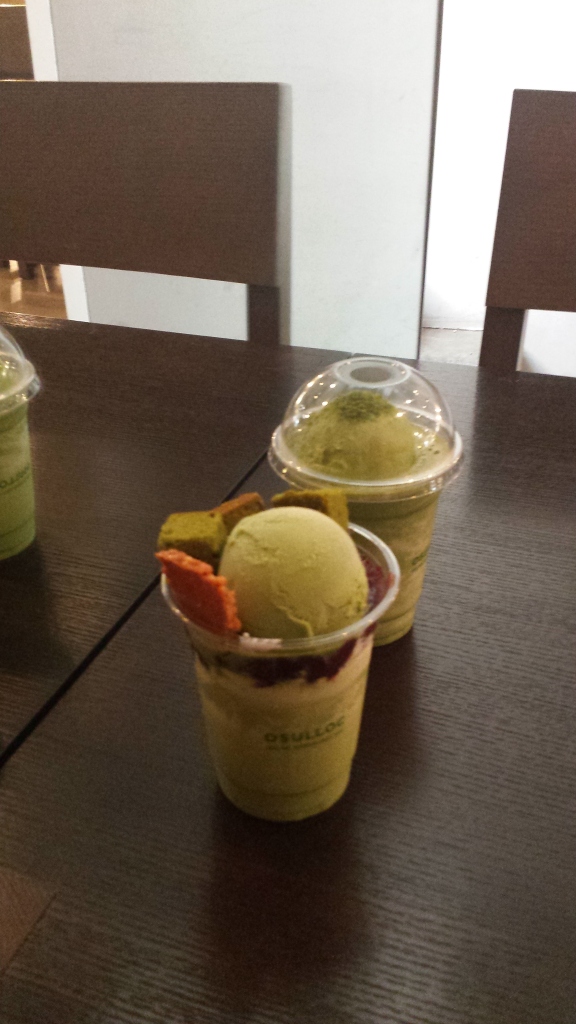Think about it. Every culture in the world has some kind of tea they call their own. It’s not just a bunch of tea leaves taken from a tree! There’s thousands of varieties and ways to prepare the drink, all with special cultural significance to their own people. Here’s a few you might not have known or thought about!
Yak Tea
Found in the grass plains of Tibet, this is made with loose black tea, thoughthere seemed to be more of the stalks in this than leaves. Yak milk is then boiled in a pot over a fire, the tea added, then served into rice-bowl sized tea cups. It tastes more of the milk than it does the tea, and is very filling because of it.
Mate
One of South America’s favourite drinks is often passed around and shared. Made from a herbal leaf, it’s crushed up and put into a small pot, and water poured over it. I love the metal straw-crossed-strainer it’s drunk from! If you’ve not seen one yet, have a Google!

Above image courtesey of http://www.annahar.com
Saffron Tea
It is of course common to have herbal teas. However, saffron is such an expensive spice outside of Iran that most people wouldn’t consider putting it in a tea. Saffron is very abundant and relatively cheap in Iran. The tea is a dark orangey colour, and has a wonderful earthy flavour. Iranians love teahouses, and they’re often the places to hangout with friends and family after dark. They serve all sorts of teas, including cinnamon and cardamom teas, which came in a close second and third to saffron! Tea is served in small glass cups, and often served with small cakes – and if you’re up for it, sheesha.
Above: Even in the smallest of Iranian villages, you can still find a teahouse!
Artichoke Tea
In the ex-resort town of Da Lat, Vietnam’s French connection is highlighted in its architecture and food. Butter is used more often in cooking, some wines are grown in the region, and the climate is better for European fruit and vegetables like strawberries and artichokes. It’s here that the unusual artichoke tea can be found, a local speciality that crosses Vietnamese tea culture with French influences.

Above: The market in Da Lat is one of the few places you can sample artichoke tea.
Masala tea
Perhaps this isn’t unusual, but it is interesting to note how far this way of making tea has travelled! Originating from India, this spiced tea brewed in warmed milk has become the traditional way of making tea in Oman and East Africa, despite the distances. The sweetness and blend of spices can change a little between cultures and families. A delicious way to prove how small the world is!
Russian Samovar
The Samovar is a Russian invention that was spread by their empire throughout Central Asia, and neighbouring countries such as Iran and Turkey. It is essentially a big urn, usually heated by coal. Long before the office kitchenette had hot water instantly available, these samovars were a staple in Russian homes, and were an easy way to boil water quickly and prepare tea.

Above: Russian samovars were imported the world over, including to the Persian Shah. (See large silver samovar on back table.)
Tea with Tea Cake and Tea Ice Cream
I love matcha. Since matcha powder came along, there’s been green tea flavoured everything popping up, from ice cream to KitKats. When you think about it, it’s crazy that tea can be put into so many things, and not just drunk – the humble drink has come a long way, and promoted itself to food! There are a lot of matcha cafes opening up, with matcha powder based drinks and goods for sale. A few of my favourites include matcha and Oreo frappe from a place in Sydney. When in Korea, a friend recommended this place, O Sulloc’s, apparently quite famous for the tea products made on Jejo island. Since I was only in the place once, I went all out: a green tea latte, with green tea ice cream, and green tea cake!

There are hundreds more of course, but these are a just few of my favourites. Others that caught my attention included insect poo tea (don’t think I could bring myself to drink that!), the luxurious gold coated tea (don’t think I could afford that), chocolate tea (don’t think I won’t try that) and the banana tea which my sister found for me in Sri Lanka. This wonderful drink we call tea is incredibly versatile, and clearly loved worldwide.
Know of any other weird and wonderful tea varieties or ways of brewing? Comment below!




